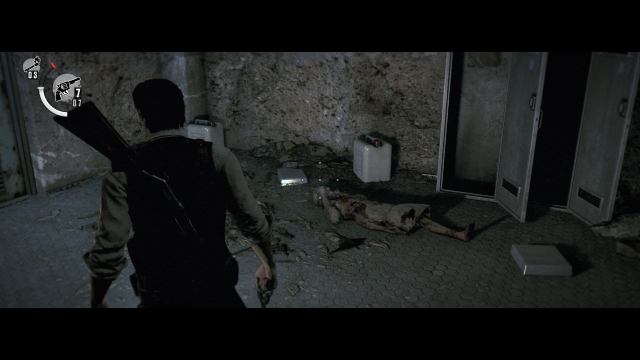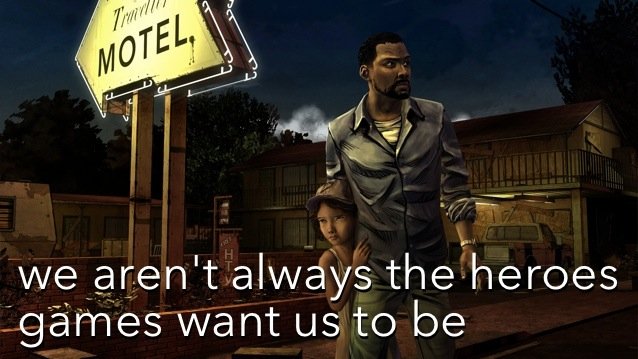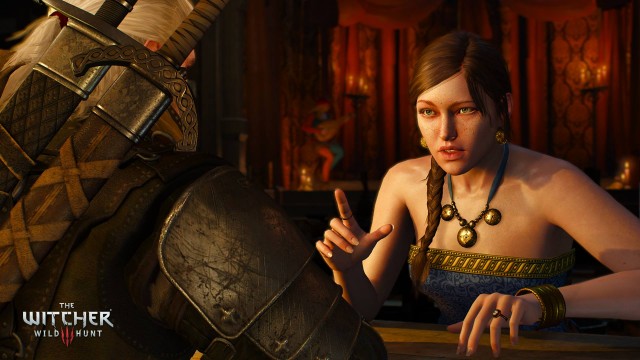

“Space, the final frontier. These are the voyages of the Starship Enterprise. Its ongoing mission – to explore strange new worlds, to seek out new life and new civilizations, to boldly go where no man has gone before…”
Geeks all over the world were ecstatic when the news broke that the U.S. television network CBS is making a new series of Star Trek. The good news was tempered by the fact that initially it will only be available on CBS’ streaming service – CBS All-Access, which costs $5.99 a month.
Star Trek has been around for almost 50 years, spawned five television series and 12 movies (at the time of writing). Just like James Bond, it is a monster of a franchise, and has firmly inserted itself into modern culture. Who hasn’t heard the phrases, “Resistance is futile,” or, “Beam me up Scotty” (despite the latter phrase never actually appearing in any episode or movie)?
Star Trek has also given us futuristic technology concepts such as the universal translator, the phaser, the transporter, and the awe-inspiring holodeck.
Most people know about Captain Kirk, Spock, and the Starship Enterprise. And the show appeals to all age groups. As many adults watch it as children (probably because they watched it as children themselves). Its central theme of space travel, meeting new species, action scenes when the bad guys try to muscle in… there’s something for everyone in this show.
So, without further ado, we present our beginner’s guide to the Star Trek franchise!
First, let’s take a look at each of the TV shows in turn. We’ll miss out the animated series, which Roddenberry referred to as “non-canon,” meaning basically that it doesn’t fit into the Star Trek timeline. It’s also been considered an embarrassment thanks to the really bad animation.
This is the original series of 79 episodes that kicked off the whole Star Trek juggernaut. During its initial run, the show’s ratings were actually quite poor. It didn’t enjoy peak popularity until it went into syndication in subsequent years.
Set in the 23rd century, the show’s “five year mission, to boldly go where no man has gone before” introduced us to classic characters such as ship doctor Bones (“Dammit Jim! I’m a doctor, not an [insert other job title here]”), and Mr Spock, the Vulcan whose race displays no human emotions. The ship’s captain is Captain James Tiberius Kirk, played by William Shatner. The running joke in the series is Shatner’s frequent over-the-top acting.
Star Trek: The Next Generation ran for seven seasons and 176 episodes, and is frequently voted as the most popular series of the whole Star Trek franchise.
The Next Generation (often abbreviated to TNG) introduces to us a new crew of the Enterprise, 100 years after the original series was set. The captain in this series is Jean-Luc Picard, who is highly educated and likes the finer things in life. He is also a natural diplomat, but at the same time can display streaks of ruthlessness.
The show breaks with the original series in two aspects – the Klingon security officer, Worf (in Kirk’s time, the Klingons were Starfleet’s mortal enemies), and the android second officer, Data. It also introduces an extremely annoying boy called Wesley Crusher (played by Wil Wheaton).
With the Klingons out of the way, the new enemies are the Romulans, Q (who is really more of a pest than anything else, albeit an omnipotent one), and later The Borg.
The Borg are the worst of all – they are cyborgs who do not think for themselves. They are plugged into “the Collective” and are known for telling their enemies that, “Resistance is futile”. In the biggest cliffhanger episode ever in TNG, the Borg kidnap Picard and turn him into one of them.
Deep Space Nine (DS9) also ran for seven seasons, and was totally different from the moment it started. It isn’t set on the Enterprise, or any starship for that matter. Instead, it is set on a space station, although a spacecraft was introduced in later seasons. There was also a new guy in charge: Commander Benjamin Sisko, played by Avery Brooks. A couple of familiar faces from TNG made the crossover to DS9 – namely, engineer Miles O’Brien and Commander Worf.
It is notable that this was the first Star Trek series made without the involvement of Gene Roddenberry (who died in 1991). Also of note is that this series began while The Next Generation was still running. So there was some crossover between the shows. Picard appeared in the pilot episode of DS9, for example.
The main villains in DS9 are the Cardassians, who used to own the space station, and who want it back due to its strategic position next to a wormhole. The series centers around the planet of Bajor which is recovering from a long war with Cardassia, and is part-running Deep Space 9 with the Federation. The aforementioned wormhole is a gateway to the distant, unexplored Gamma Quadrant, which enables all manner of alien species to come through and visit the station.
Voyager also ran for seven seasons and differs from the previous series in three ways. First, the ship is not the Enterprise. It is Voyager. Secondly, due to the nature of the plot, many of the top officers were not Starfleet-trained, and are only commissioned officers out of necessity. Thirdly, this was the first Star Trek series to have a female captain – Kathryn Janeway, played by Kate Mulgrew.
Set during the late 24th century, the USS Voyager is hunting for a ship piloted by the Maquis (a paramilitary terrorist group). An accident hurtles them into the Deltra Quadrant, and they soon discover that it will take 75 years to get home. When they finally capture the Maquis, they find they are trapped together, and some of them are offered Starfleet commissions as a way to get along.
Since the Delta Quadrant is unexplored, they realize this is a golden opportunity to conduct research while making their way home. They employ every trick and shortcut they can think of to shorten that 75-year journey.
Enterprise ran for just four seasons, and is a prequel to The Original Series. Enterprise is generally considered to be the weakest of the Star Trek shows, despite the Captain’s chair being filled by a veteran of science-fiction – Scott Bakula, who is best known for the show, Quantum Leap. It’s also the first Star Trek to have an opening soundtrack, which is not “Trek”.
The show is set in the year 2151 (115 years before Kirk takes over), and the show ends in the year 2161, when the United Federation of Planets is formed. The show starts when Warp 5 is achieved, enabling ships to travel faster and further into space. Archer captains the experimental prototype Enterprise, and along with his crew, travels into areas of space previously unvisited. Along the way, they encounter alien species hell-bent on destroying the Federation by manipulating the timeline and changing past events.
Although everyone has got to know Star Trek through the TV shows, it is the movies which have really cemented this franchise in the public consciousness. Who doesn’t love going to the cinema to see a good science fiction flick? There was a long-standing joke going around that all the odd-numbered movies were complete flops, while the even-numbered ones were blockbuster hits (just like Windows). That was until JJ Abrams came along and broke the curse.
This is the movie which kickstarted Star Trek again, after the TV series was cancelled in 1969. The movie was green-lighted after the TV series’ huge success in syndication. It was also rushed into production after the staggering success of Star Wars. The movie has Captain Kirk and his crew going into action against a mysterious alien entity called V’Ger.
This is consistently voted as the best Star Trek movie of the lot. A bad man called Khan and his crew escape from a 15-year exile from a planet not exactly known as being hospitable. They are therefore intent on revenge against Kirk (the reasons why are found out in the later movie Star Trek Into Darkness), and part of their plan involves stealing a terraforming invention called Genesis.
While the previous film left fans wondering if Spock had died, the title of this one revealed the truth. Spock isn’t dead, merely regenerated. His spirit has been transferred to Bones, the ship’s doctor, and when Kirk realizes that his friend is still alive, he risks a court-martial by stealing the Enterprise, and going after Spock. By the end of the movie, the Enterprise is destroyed, the crew are fugitives and they face certain arrest when they go home.
The crew start to make their way home, to stand trial for their crimes. But in their absence, Earth has been crippled by a mysterious entity which is looking for now-extinct humpback whales. Kirk and the crew decide to time travel back to the 20th century (as you do) and bring back two whales to communicate with the entity. The quirky and funny storyline made this movie an instant hit. It also redeems them in the eyes of the Federation and no charges are filed over their mutiny in the previous movie.
The Final Frontier was an instant dud. Spock’s half-brother believes he has been summoned by God and steals the Enterprise to go and meet him. Kirk also faces problems from a Klingon wanting to avenge the incident on Genesis. This movie is extremely dull and tedious. And to be frank, you would not be missing anything by skipping this one.
The Klingons make peace overtures to the Federation, but it is not well received on either sides. The Klingon chancellor is assassinated on his way to the peace conference, and Kirk is held responsible. When Spock starts investigating the incident, he uncovers a massive conspiracy against the peace process. This is a movie which you may not like so much the first time, but if you watch it a few more times, it starts to grow on you.
This was the film which finally ended the Kirk era of Star Trek, with the baton being passed over to Picard and his crew. At the start of the movie, Kirk is presumed dead in an accident, but is later found alive in an alternative universe called the Nexus. Picard recruits him once more to stop a mad doctor who is intent on entering the Nexus using a method that will ultimately destroy a populated planet.
This is, in my opinion, the best of the Picard movies. It re-introduces the Borg as the really bad guys who try to alter past events by stopping the first contact between Earth and the Vulcans, an event which led to the events in Enterprise. Picard takes the USS Enterprise back through time to stop the Borg and allow history to proceed as it should. It also introduces Zefram Cochrane who creates the warp drive system which brings the Vulcans to Earth to establish “first contact”.
A Starfleet admiral decides to violate the Prime Directive and move the population of a planet elsewhere, so the Federation can steal the rejuvenating properties of the planet. Picard decides he cannot stand by and watch the Prime Directive being violated, so he deliberately sabotages the plan.
This is considered the biggest flop of the Picard movies. A clone of Picard created by the Romulans assassinates the entire Romulan Senate, assumes dictatorship, and lures the Enterprise under the guise of peace overtures. Needless to say, peace is the last thing on his mind. This is the last movie with Captain Picard and his crew. Due to how badly it was received, it would be another seven years before another Star Trek movie would come out – and it would not be with this crew.
After the flop of the last movie, this movie “reboots” the franchise and takes the movies back to the beginning, to before Kirk assumes command of the Enterprise. After Romulans destroy the planet of Vulcan, the Federation needs to stop them before they can do the same to Earth. Directed by J.J. Abrams, this is the only Star Trek movie to date to win an Academy Award. It is also, in my opinion, the best Star Trek movie since The Wrath of Khan.
This movie explores some of the back story relating to Khan (from The Wrath of Khan), and why he hates Kirk so much. Khan attacks a Federation command building in London and is subsequently hunted down and arrested by Kirk and the Enterprise crew. At Khan’s urging, they closely examine torpedoes brought on board the Enterprise, and the discovery unmasks a conspiracy to go to war with the Klingons.
Star Trek isn’t just a collection of TV shows and movies. Because this is a franchise that has always pushed the boundaries, and taken care to highlight the social issues of the day.
@dolphfan36 They are reducing speed Uhura patch me in pic.twitter.com/nJYnBBs8CN
— Bones (@BonesDeForest) November 7, 2015
Gene Roddenberry, the creator of Star Trek, was an idealist. He envisioned a future where there was peace, no poverty, no need to covet wealth, and everybody works instead for the good of mankind. Oh, and space travel, naturally. He also wanted to see people of all races, creeds, and religions represented equally.
When the show started in 1966, having a black crew member was a big deal, but the absolutely gorgeous and hugely talented Nichelle Nichols did a fantastic job bringing the character of Lieutenant Uhura to life. As the communications officer she is perhaps best known for sitting in her swivel seat with her finger to her ear, telling Kirk that “a signal is coming in”.
Uhura was revolutionary back in 1966 because even though the Civil Rights Act had been enacted two years earlier, racism was still rife in parts of the U.S. None more so than in television. Before Uhura, any black characters had been shown in menial roles. Uhura was the first character that played a central role in Star Trek, and Nichols paved the way for other black actors.
Predictably there was an uproar over her casting, and Nichols eventually wanted to quit after the first season to pursue other interests. However, she has said in many interviews since that the man that talked her out of quitting was none other than Martin Luther King, who told her:
“You are our image of where we’re going, you’re 300 years from now, and that means that’s where we are and it takes place now. Keep doing what you’re doing, you are our inspiration… for the first time, we’re seen as we should be seen. You don’t have a black role. You have an equal role”.
In the episode, Plato’s Stepchildren, Uhura shares a kiss with Captain Kirk. It was the first interracial kiss on television, and all the Klan members in their white hoods had collective heart attacks. These days, no-one would bat an eyelid at an interracial kiss, and rightly so. But back then? It was an extremely daring move on the part of this progressive show.
The first interracial kiss on US TV was between Kirk and Uhura in the Star Trek episode Plato's Stepchildren – 1968 pic.twitter.com/yKq2JiHY90
— Atomic Fact (@Atomicfact) October 15, 2015
That wraps up our beginner’s guide to the Star Trek franchise, and we hope it has given you a broad understanding of the show and its main players. With a new series in the works, Star Trek looks set to live on into the future in which it’s set.
Are you an existing Star Trek fan? If so, which TV series or film is your favorite? Is Star Trek important because of its focus on social issues or because it’s good science fiction fare? Will you be watching the new series when it airs on CBS in 2017?
Please let us know your thoughts on Star Trek in the comments section below.




 Shadow Warrior Preview: The Dismemberments You Deserve
Shadow Warrior Preview: The Dismemberments You Deserve Top 10 Best Mech Games of All Time
Top 10 Best Mech Games of All Time We Arent Always The Heroes Games Want Us To Be
We Arent Always The Heroes Games Want Us To Be Fallout 4 Settlement Building Walkthrough
Fallout 4 Settlement Building Walkthrough The Witcher 3: Wild Hunt Best Weapons Guide
The Witcher 3: Wild Hunt Best Weapons Guide